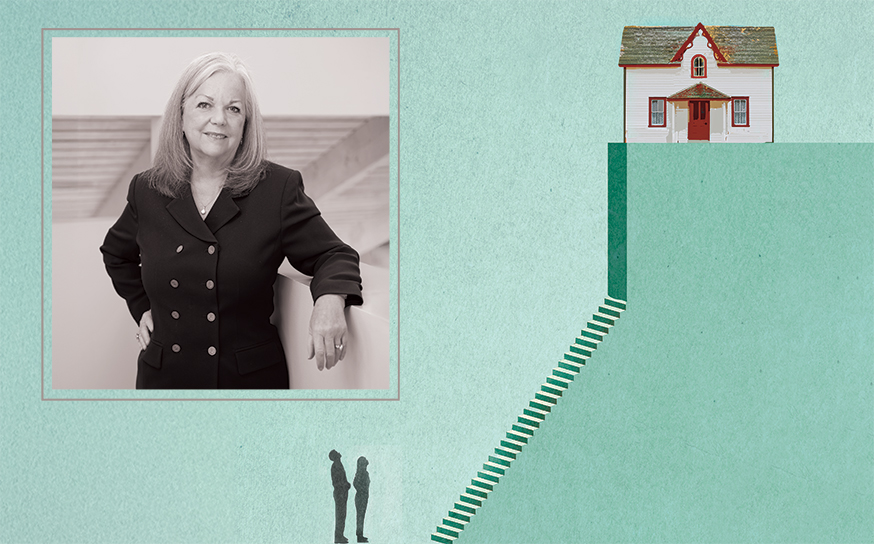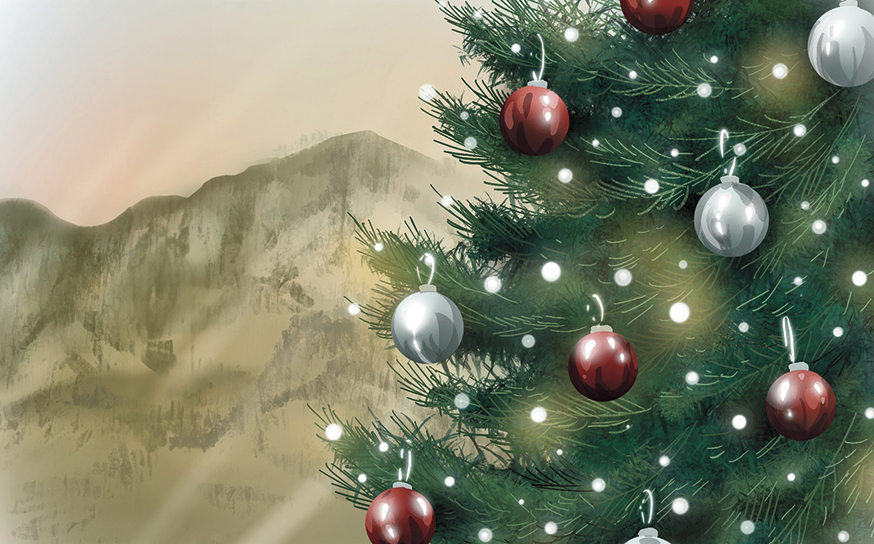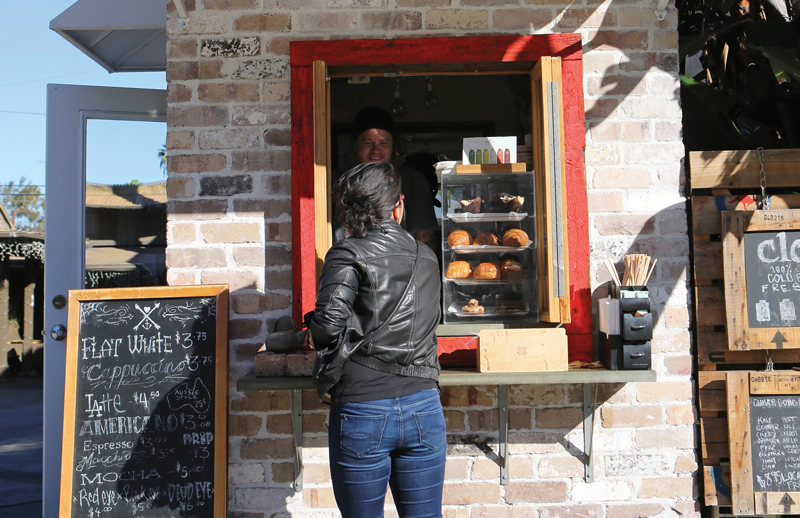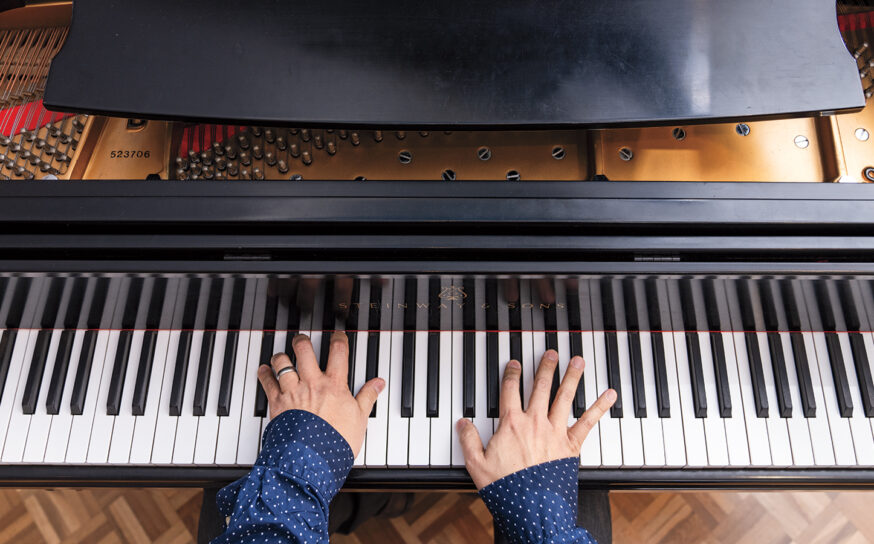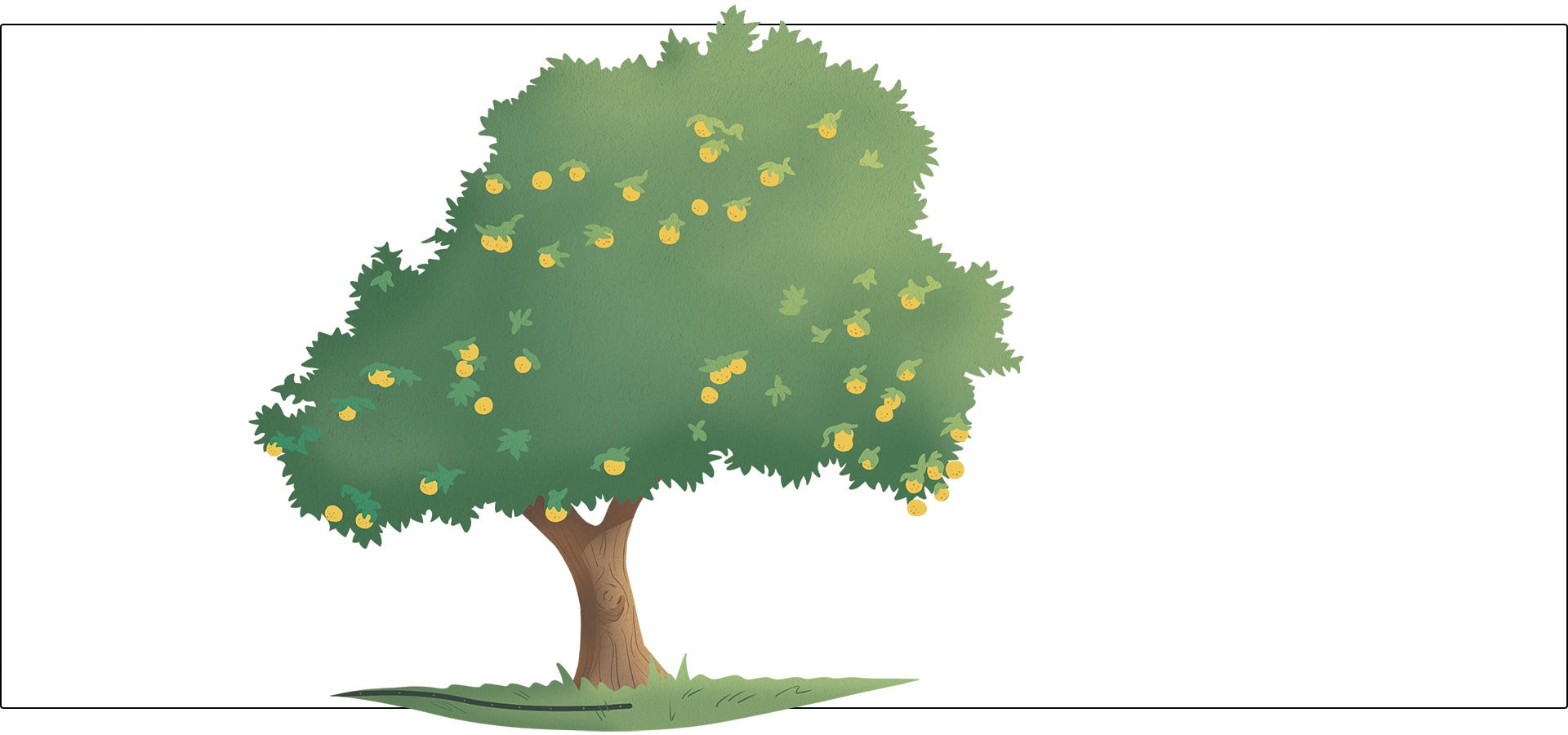
Fruitstitute’s Joanna Glovinsky on How to Have a Tree That Explodes with Fruit
Fruits of your labor.
-
CategoryHomes
-
Written byDakota Kim
-
Illustrated byNikki Smith
The Valley is full of glorious fruit trees—veritable ranches are hidden in backyards, and orchards grow in plain sight out front. Yet few of us actually know about proper care for our trees. Joanna Glovinsky, the founder of Fruitstitute (fruitstitute.com), LA’s only fruit tree care and education service, aims to help homeowners with their orchards, whether one tree or 50. Here are her suggestions on Valley tree care, from root to crown.
- Water with a long, slow flow of drip irrigation, going as far as the canopy of leaves extends and slightly farther. Don’t water near or on the trunk, as that can cause rot. The amount of water depends on species, soil type, weather and time of year. In general, 20 to 40 minutes of deep watering is required to saturate soil and reach deep roots.
- Buy Felco pruners and keep them sharpened, clean and oiled. Cut on an angle, making sure to cut at crotches. Remove any weak, broken or diseased branches. Prune no more than 10% to 15% of a tree in one year; avoid overpruning.
- Harvest fruit regularly and evenly so the tree doesn’t become lopsided. Don’t leave ripe fruit to rot on tree or on ground, which attracts pests. Thin fruit early on in a tree’s life so weaker branches don’t break from the weight.
- Fertilize soil in spring and fall with compost, and add wood mulch around the tree during the vital first five years of your tree’s life. Don’t use gravel as mulch or plant a tree near concrete.
Joanna’s Essential Tips On Caring For
These Delicate Yet Hearty Creatures
- Understand that fruit trees require different and more specialized care than forest or landscape trees.
- Trees should be fertilized and mulched once to twice a year, during spring and/or fall. The best feed is wood mulch. Fertilization should occur with rich compost for the soil.
- Start your care regime early. The first five years of a tree’s life are important, but the first two to three years are vital. Fertilize and mulch early on and you’ll have a happier tree later.
- Yellow leaves indicate over- or underwatering. If you’ve underwatered, leaves will show yellowing and curl like little burritos. If you’ve overwatered, leaves will be yellow but flat, not curled. Yellow leaves can also indicate nutritional deficiencies. So fertilize, compost and mulch your trees.
- Thin fruit early on, because a fruit tree will overproduce and you won’t get good fruit the following year.
More Stories






